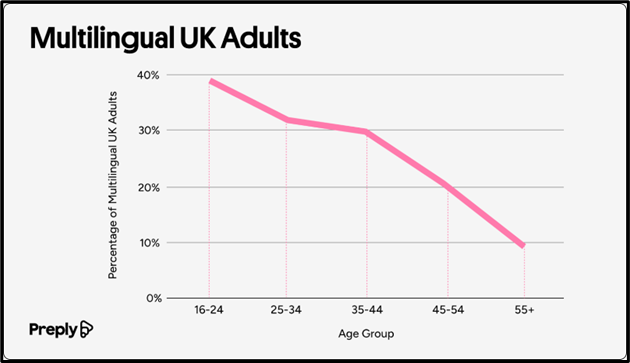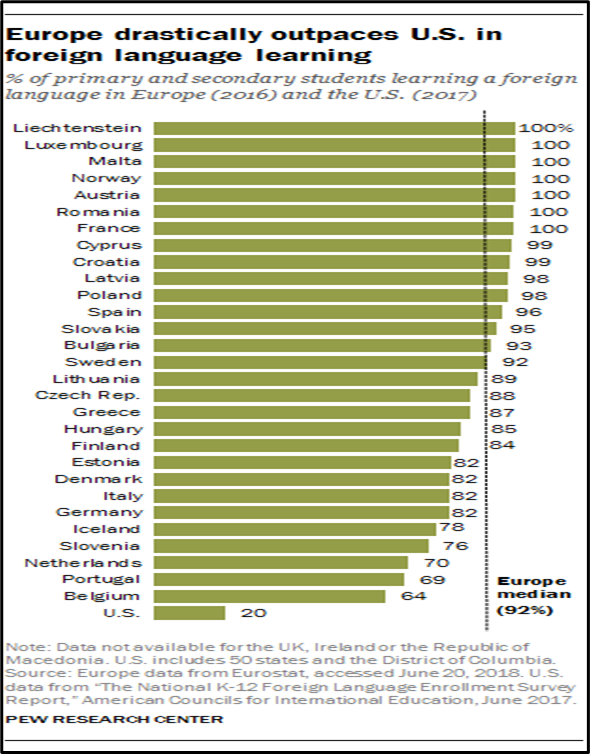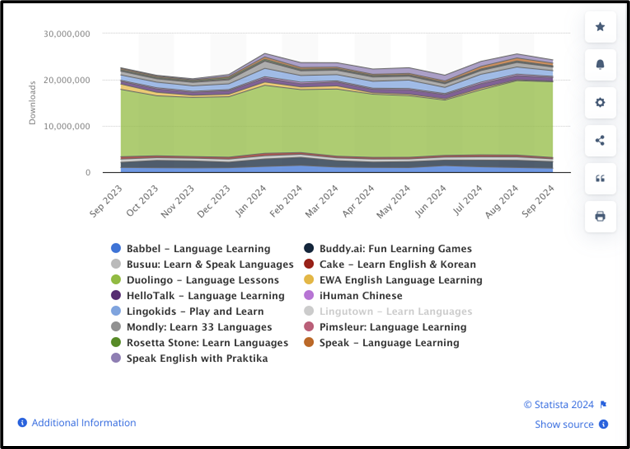Psychological Strategies To Encourage Language Learning in Kids: Expert Advice
The world has become a global village. People interact with each other and do business with one another, no matter where they are in the world. So, learning another language besides your mother tongue is a great idea.
Language learning, however, is best for children as young as they are. They are like sponges that can easily and quickly absorb what they are being taught. The challenge? Teaching young minds requires some psychological tips and tricks.
Fret not; This page shares some psychological strategies for learning language among children. Whether you’re a parent encouraging your kids to speak or a teacher motivating students to learn a particular language, read on for some expert advice.
How To Encourage Language Learning among Your Children
In the age of globalization, being multilingual or bilingual gives communicators a competitive advantage. However, language learning can be quite difficult for older people. That’s why it’s best to teach children as young as they are.
Ling surveyed 2000 respondents in the U.S. regarding language learning. The survey revealed that English, Spanish, Korean, French, and Japanese are the most learned second languages in the country.
Now, how do you effectively teach children to learn a second language? For all we know, they can be very playful, rowdy, and inattentive. A psychological approach to language learning among kids is key!
But how does it work? Don’t worry! Whether you’re a parent or a teacher, here are some psychological tips and tricks for you:
1. Tailor teaching approach to your kid’s needs and interests
Children have different cognitive abilities, learning styles, and preferences in life. As such, evaluating your kids’ learning needs and interests is crucial. That way, you can align your teaching techniques with what works best for them.
That said, here’s what you need to do:
- Learning assessment: As a parent, you should assess your kid’s communication skills, language learning styles, and overall behavior. However, as a teacher, it’s best to conduct formal evaluations before the actual language sessions.
- Teaching strategies: Based on the results of the language assessments, you can personalize your teaching tactics with individual needs and interests. For example, customize your language approach for specific learning disabilities (SLDs) in children.
2. Set up a fun, interactive learning environment in place
Most of the surveys on language learning focus on adults. In fact, those aged 16 to 24 are by far the most multilingual. More than a third of people in this age group speak more than two languages.
But what about children? Of course, it’s unreasonable to survey their language skills as they are yet to grow and develop. However, their multi-language proficiency proves bright and promising due to digital exposure.
Psychologically, an exciting and engaging learning environment works best for children. The good news? There are fun and easy ways to learn language with your kids or students. Employing play-based learning, such as interactive games and role-playing, is key!
3. Harness the power of sensory aids for language learning
Language learning with children can be challenging, especially with preschoolers. However, appealing to their senses allows them to know better and faster. So, using sensory aids helps the kids develop and acquire the language psychologically.
Here’s how to make the language learning process multisensory:
- Visual aids: Aesthetically appealing images instantly grab the kids’ attention. For example, you can display a colorful Latin alphabet or show attractive flashcards with Spanish names.
- Auditory aids: Language training should be music to the kids’ ears. For instance, consider using songs, rhymes, or audio stories in English, Spanish, or Chinese.
4. Immerse your kids in a language-learning environment
Language immersion transforms children’s learning. This psychological technique entails exposing them to the language through the environment, whether at home or in school. The more they are exposed to this language, the more they will adapt to it unconsciously.
For example, you can:
- Let them watch cartoons speaking a certain language.
- Allow them to listen to music in that particular language.
- Tell them bedtime stories in Spanish, French, or German.
- Decorate the classroom using the English language.
- Encourage all kids to speak the language during class.
5. Expose your kids to language through social interactions
It’s now easy to see children communicate because of social media exposure and digital interactions. However, what better way to learn a particular language than practicing it at home or school? Using the language is indeed the best way for children to develop and acquire it psychologically.
How do you go about doing that? Here’s how:
- Home:As a parent, communicate with your kids using the language in the comforts of your own home. Or if it’s a second language you want them to learn, allocate a certain time for it. For example, bedtime stories in that language in your child’s bed is a positive way to alleviate any stress associated with language learning.
- School: Did you know that more European students are learning a foreign language in school than Americans? As a mentor, you’re responsible for unleashing your students’ language proficiency. You can achieve this goal if you let them use the language during class. So, when kids are in Rome class, speak Italian as would Romans do.
6. Offer your kids attractive rewards and positive reinforcements
Integrating language learning into early education can be challenging. However, offering enticing rewards appeals to children and motivates them to learn more. That’s where positive reinforcement comes into play as a psychological technique for language learning.
Here’s how it works:
- Attractive rewards: As a teacher, establish a reward system for kids in their language training class. For example, attach Star stickers on their papers if they answer the correct language translation.
- Positive reinforcements: As a parent, you should employ positive reinforcement for your kids. For instance, if they can memorize certain words or phrases, you could let them have extra playtime.
7. Encourage constant practice and normalize correcting mistakes
The concept of learning often leans towards perfection, which means having no mistakes. However, true learning involves committing mistakes and learning from them. So, when it comes to language learning, it’s okay for kids to make mistakes and continue to practice.
Teaching your child to speak and develop language skills requires the following:
- Regular practice: The idea of “practice makes perfect’ rings true to this day. If you want your kids to learn a particular language, let them practice, practice, practice. They’ll eventually get the hang of speaking the language.
- Mistake corrections: Some students don’t speak the language because they fear they might make mistakes. They are afraid they might mispronounce words or use the wrong expressions. However, create an environment where it’s normal to commit language mistakes and get corrected.
8. Take advantage of innovative models and modern technologies
Innovative models and advanced technologies shape the future of learning, which applies to language learning as well. In fact, children nowadays get to learn specific languages via social media and other online channels. That’s why you should capitalize on technology that has a psychological impact on kids.
That said, consider the following:
- Innovative models: Consider learning models that appeal to the younger generation, such as personalization and gamification. You can use these models to augment or reinforce your language training for kids.
- Advanced tech: Consider some of the latest technologies like automation, artificial intelligence (AI), and virtual reality (VR) or augmented reality (AR). Statista shares the top language learning apps you can leverage for kids, as follows:
Boosting Language Proficiency in Children
Language learning works best for children. Whether you’re a mom or dad encouraging your kids to speak or a mentor teaching a certain language, start them young. However, remember that this requires psychological tips and tricks of some sort.
That said, consider some of our psychological strategies recommended above. Start with a personalized approach and end with constant practice. Likewise, employ play-based learning, sensory aids, language immersion, social interactions, and positive reinforcements.
With all these, you can ultimately make your kids or students language-proficient in time!
Looking forward to having your children learn a specific language or two? We’ve got you covered!
Safe Search Kids is a valuable educational resource for both parents and teachers. It aims to promote internet safety, parental controls, and child well-being. So, what are you waiting for? Get in touch with us today to see how we can help!









